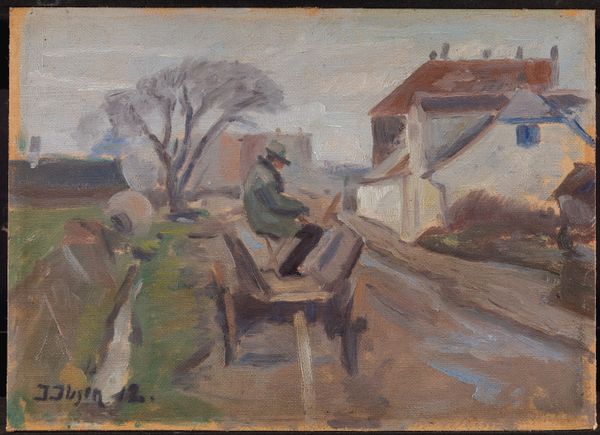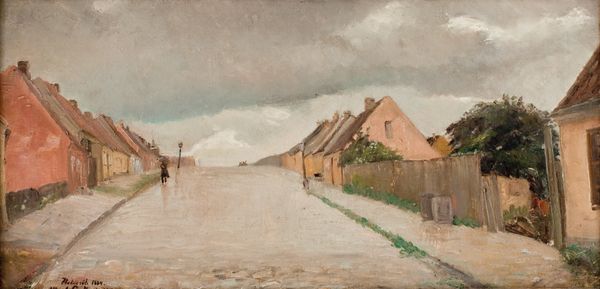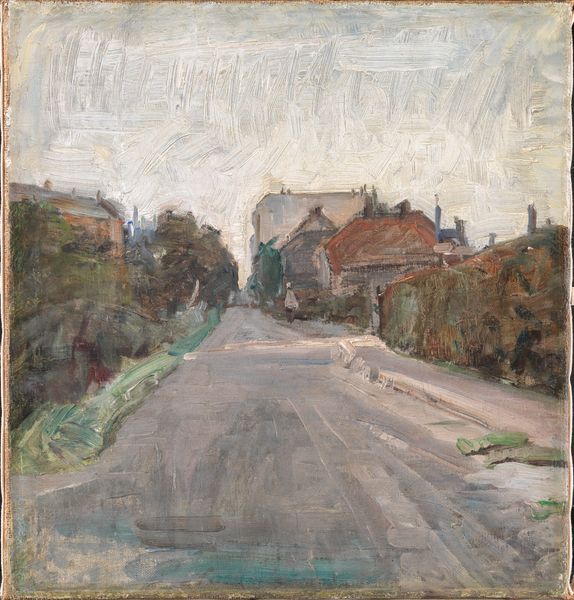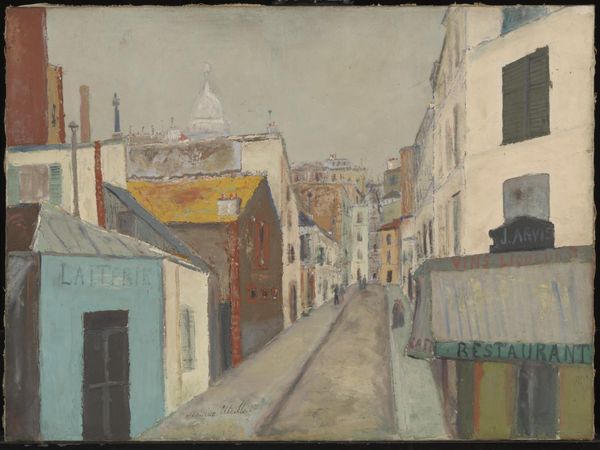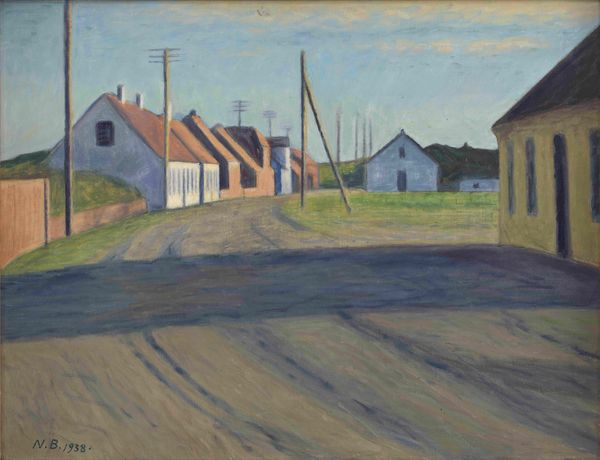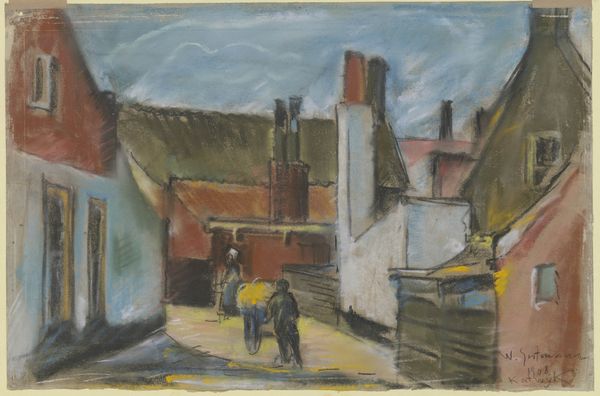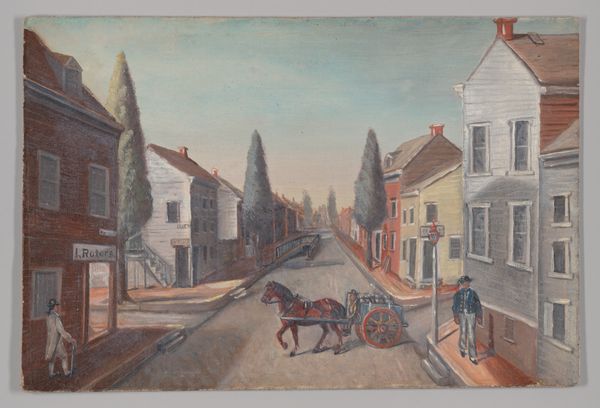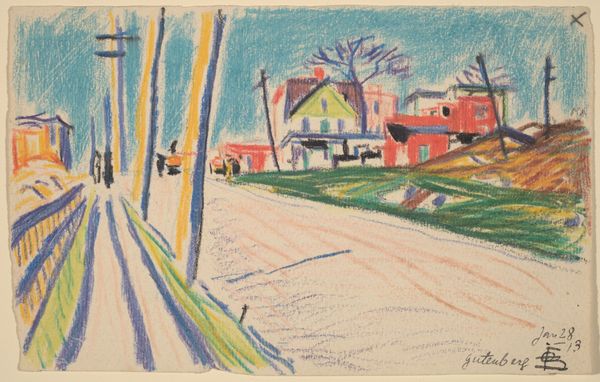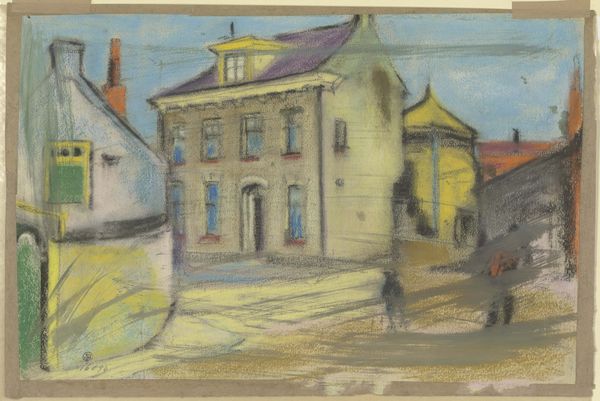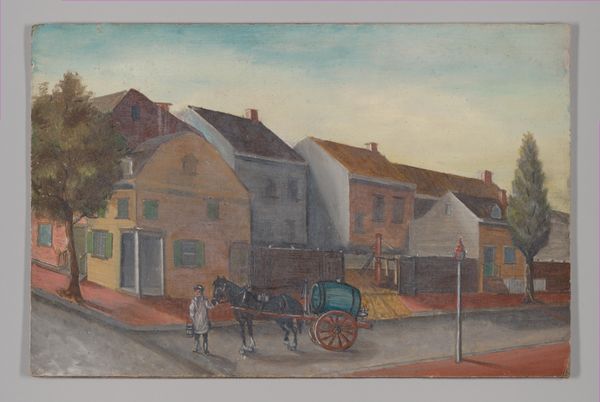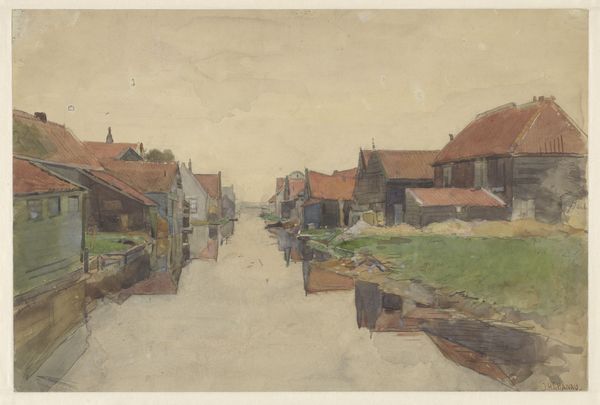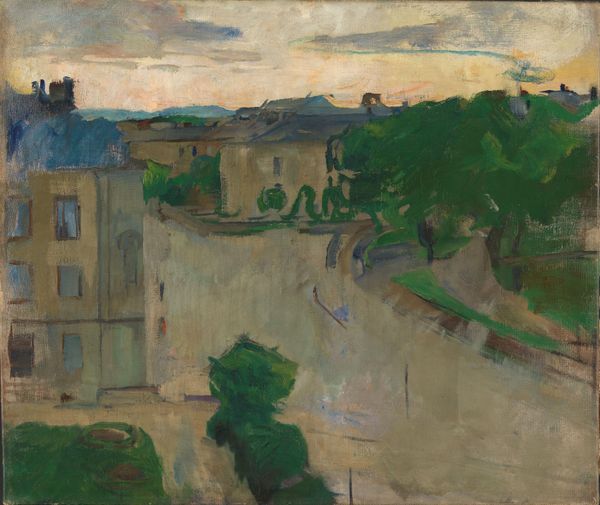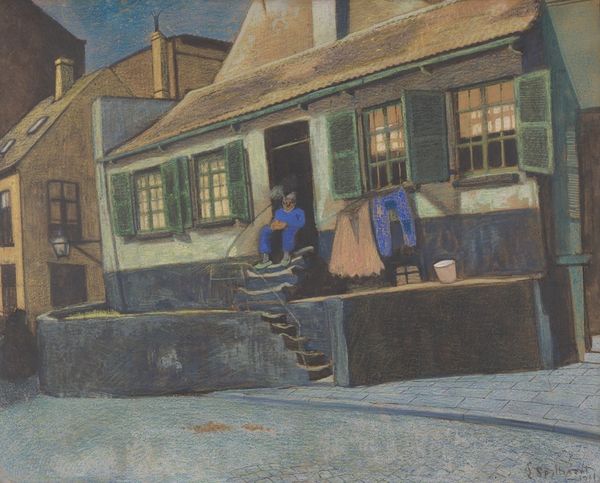
plein-air, oil-paint
#
plein-air
#
oil-paint
#
landscape
#
figuration
#
oil painting
#
acrylic on canvas
#
cityscape
#
realism
Dimensions: 70 cm (height) x 100 cm (width) (Netto)
Curator: This is Erik Raadal's "Street with Figure," painted in 1936. It resides here at the SMK, Statens Museum for Kunst. The artwork makes use of oil paint to create this lovely landscape. What are your initial thoughts? Editor: It has a quiet, almost desolate feeling. The long shadows give it a very defined, rigid composition, despite the seemingly plain subject matter. It's a rather muted palette, but it somehow emphasizes the architecture. Curator: Indeed. Raadal painted it en plein air, which allows for an interesting commentary. Here we have this genre—traditionally used to celebrate the beauties of nature—applied to an urban scene. We also see figuration with the anonymous human presence. The combination reflects the social context of Denmark in the interwar period. The shadow of modernization encroaching on older, more quaint locales. Editor: You can really feel that encroachment in the textures. Notice the thickness of the paint, especially in the foreground. He isn't trying to hide the labor here; instead, he highlights the raw materiality. I am drawn to the street surface. Its rough handling contrasts nicely with the smoother finish of the buildings and creates an unusual surface for a city street. What statement is Raadal making by emphasizing this texture? Curator: The emphasis on texture and light here may point to an intersection between aesthetic representation and socio-political reflection. These unidealized, commonplace settings gain symbolic weight through the interplay between artistic approach and prevailing socio-economic shifts in Denmark. Editor: Precisely. By using an "alla prima" method, the artist makes us think about labor—about how things are built. How does a community make its space, literally and figuratively? Even the impasto makes the viewer feel a sort of tactile connection. Curator: Yes, by combining realist themes and palpable brushstrokes, Raadal creates a compelling image. The solitary figure becomes symbolic—representing individual experience shaped within broader cultural and political forces. It is the public role of the common person in the reshaping of society. Editor: And that careful selection of material reflects that statement! Highlighting the artistic processes as part of that dialogue… Food for thought, indeed! Curator: A valuable look at an under-seen artist. Thank you for lending your expertise!
Comments
No comments
Be the first to comment and join the conversation on the ultimate creative platform.
